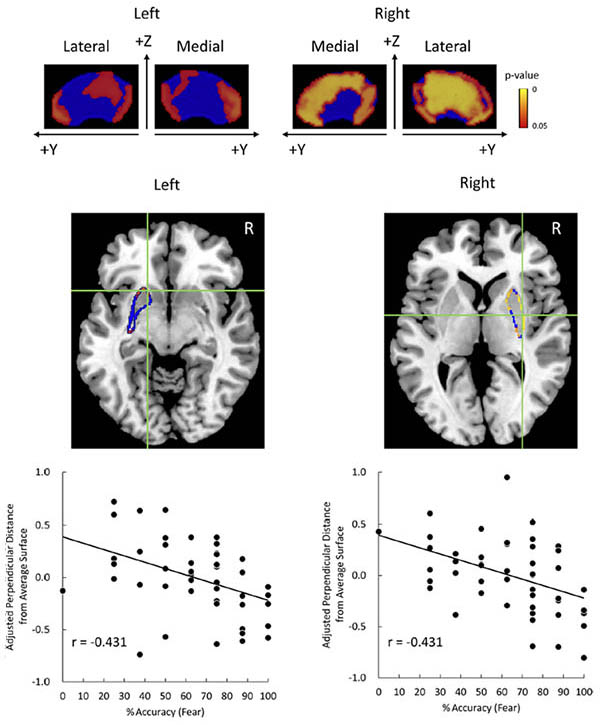SATO Wataru Laboratory
Putamen volume is negatively correlated with the ability to recognize fearful facial expressions
(Uono, Sato, Kochiyama, Kubota, Sawada, Yoshimura, & Toichi: Brain Topogr)
Findings of previous functional magnetic resonance imaging (MRI) and neuropsychological studies have suggested that specific aspects of the basal ganglia, particularly the putamen, are involved in the recognition of emotional facial expressions.
However, it remains unknown whether variations in putamen structure reflect individual differences in the ability to recognize facial expressions.
Thus, the present study assessed the putamen volumes and shapes of 50 healthy Japanese adults using structural MRI scans and evaluated the ability of participants to recognize facial expressions associated with six basic emotions: anger, disgust, fear, happiness, sadness, and surprise.
The volume of the bilateral putamen was negatively associated with the recognition of fearful faces.

The local shapes of both the anterior and posterior subregions of the bilateral putamen, which are thought to support cognitive/affective and motor processing, respectively, exhibited similar negative relationships with the recognition of fearful expressions.

These results suggest that individual differences in putamen structure can predict the ability to recognize fearful facial expressions in others.
Additionally, these findings indicate that cognitive/affective and motor processing underlie this process.
Return to
Recent Research.
Return to
Main Menu.

